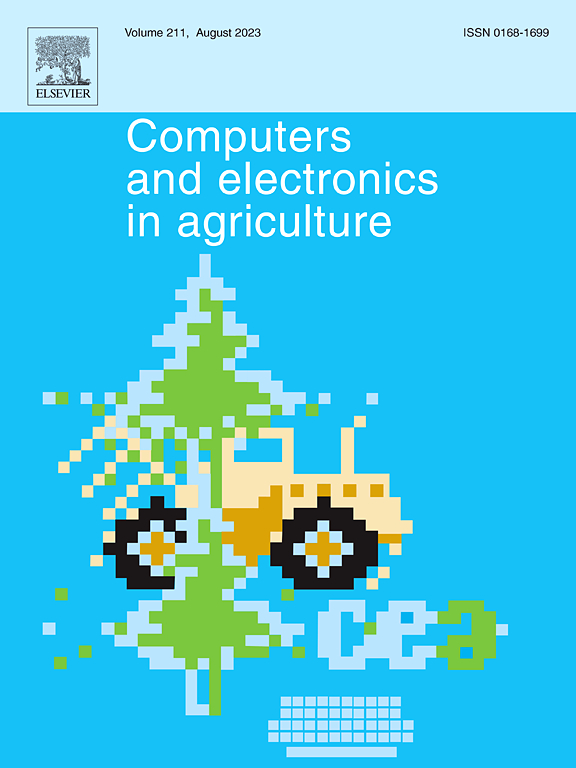Adaptive control system of header for cabbage combine harvester based on IPSO-fuzzy PID controller
IF 7.7
1区 农林科学
Q1 AGRICULTURE, MULTIDISCIPLINARY
引用次数: 0
Abstract
To address the issue of the high rates of cabbage head damage caused by header device parameter mismatches during continuous cabbage harvesting, an adaptive header control system based on an improved particle swarm optimization (IPSO) −fuzzy proportional–integral–derivative (PID) controller was developed. By performing header device kinematic analysis and configuring the system hardware, a negative feedback control model was established for the clamping mechanism lateral displacement and root-cutting mechanism longitudinal displacement. To address the limitations of the standard PSO algorithm, an adaptive inertia weight update method was introduced to balance global exploration and local search capabilities. Additionally, a spiral position update mechanism from the whale optimization algorithm was incorporated to expand the search space. To satisfy the control system requirements for positional accuracy and response speed, the IPSO algorithm was used to optimize the fuzzy PID controller parameters in real-time. Simulation results showed that the IPSO-fuzzy PID controller outperformed traditional PID and fuzzy PID controllers in response speed, steady state, and robustness. Indoor bench tests demonstrated that when the operating speed ranged from 0.1 to 0.5 m/s, the IPSO-fuzzy PID control system achieved an average harvesting acceptance rate of 97.19 %, with average lateral and longitudinal displacement errors of 1.31 and 0.92 mm, respectively. The average lateral and longitudinal response times were 0.18 and 0.15 s, respectively. Field experiment results indicated that when the forward speed of the harvester was less than 0.4 m/s, the harvesting acceptance rate for various cabbage varieties exceeded 96.42 %, demonstrating strong robustness and stability. These results confirmed that the IPSO-fuzzy PID control system can effectively adapt to different operating speeds, cabbage varieties, head shapes, and complex field conditions, meeting the industry standards for cabbage harvesting. This finding provides the theoretical support and practical references for precise control in intelligent cabbage harvesting equipment.
求助全文
约1分钟内获得全文
求助全文
来源期刊

Computers and Electronics in Agriculture
工程技术-计算机:跨学科应用
CiteScore
15.30
自引率
14.50%
发文量
800
审稿时长
62 days
期刊介绍:
Computers and Electronics in Agriculture provides international coverage of advancements in computer hardware, software, electronic instrumentation, and control systems applied to agricultural challenges. Encompassing agronomy, horticulture, forestry, aquaculture, and animal farming, the journal publishes original papers, reviews, and applications notes. It explores the use of computers and electronics in plant or animal agricultural production, covering topics like agricultural soils, water, pests, controlled environments, and waste. The scope extends to on-farm post-harvest operations and relevant technologies, including artificial intelligence, sensors, machine vision, robotics, networking, and simulation modeling. Its companion journal, Smart Agricultural Technology, continues the focus on smart applications in production agriculture.
 求助内容:
求助内容: 应助结果提醒方式:
应助结果提醒方式:


